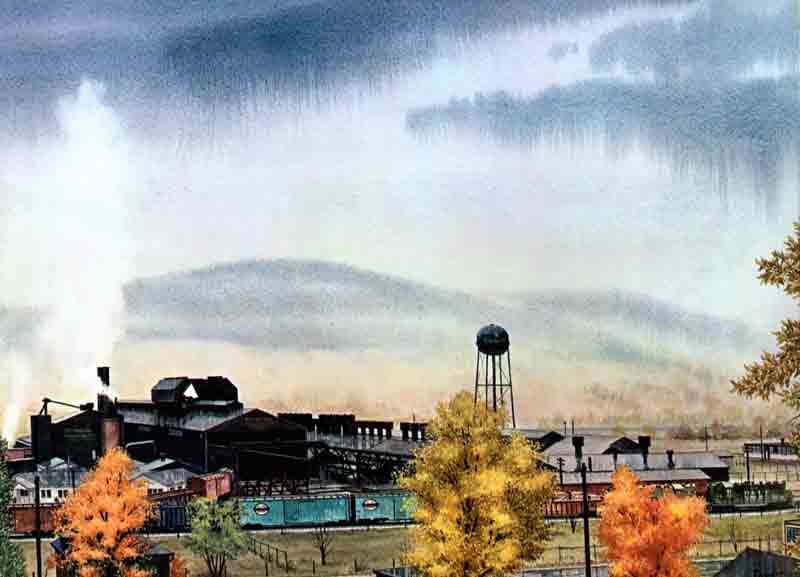
Cory60.com
Community
Your Online Class Reunion
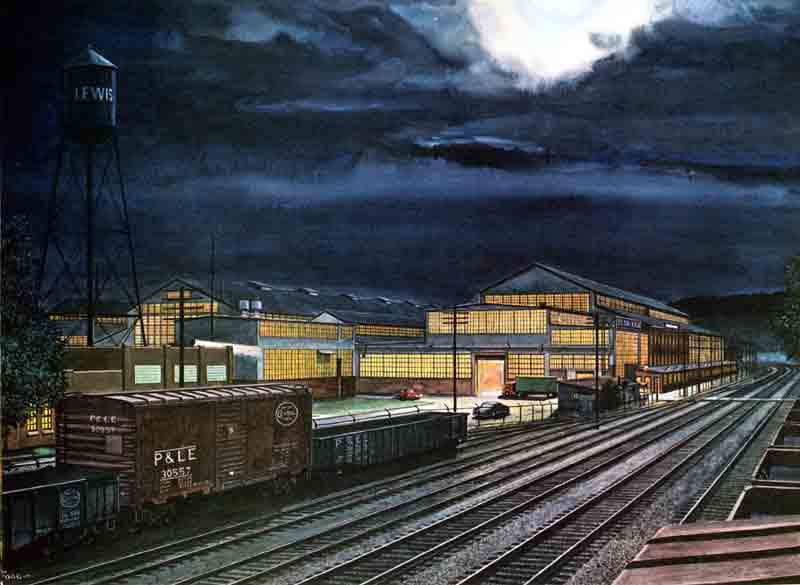
 |
Cory60.com Community Your Online Class Reunion
|
 |
| We were growing up just as America was coming out of World War II. There was a huge pent up demand for raw steel and manufactured goods. As Big Industry swung into action to meet this demand, Coraopolis rose to the forefront. We had 11 mills working 24 hours a day seven days a week and paying very good wages. A 1950 U.S. Almanac tells us Coraopolis had more manufacturing production per person than any government unit in the nation. Altogether, our mills employed 15,000 men and Coraopolis only had a total population of 11,000. Many of our fathers worked in those mills. Shifts changed three times a day, at 8 am, 4 pm and midnight. When BlawKnox (above left) and Rockwell (above right) were changing shifts traffic West of Mill Street was jammed. Many of our fathers did not work in the mills, but the industrial flavor was inescapable. Anywhere you went in town the air was filled with loud, heavy, clanging sounds and whistles and thundering of railroads. Often, especially in Winter, the air had a slightly acrid odor. And the night sky was often filled with flashes of orangish red light. We also benefitted from the mills as the huge tax base flowed into our schools. We did not pay for books or supplies, most sports equipment and field trips. The higher pay scale brought us superb coaches and teachers and allowed for low student-teacher ratios. |  |
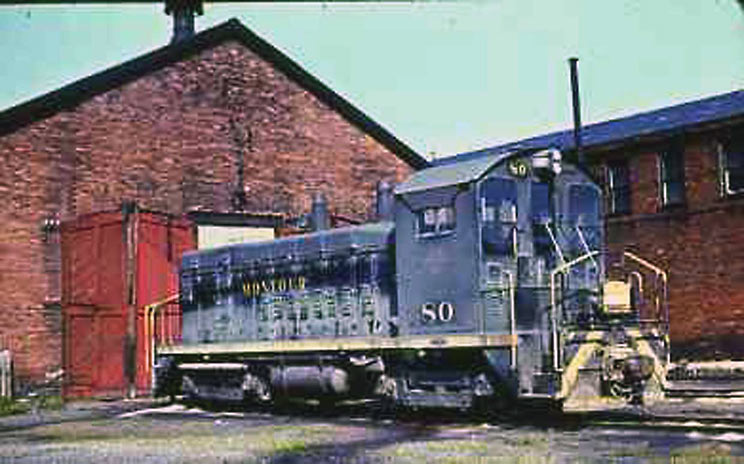 |
Many of our fathers worked on the railroads. Several major lines ran through town and we had our own, The Montour, headquartered on the East End (seen at left). The Montour extended 50 miles South and every day brought trains of coal cars from the mines. They were picked up just West of the Neville Island Bridge by the Pennsylvania and P & LE. Working on the railroads could be dangerous and difficult in harsh weather, but they paid high wages and had the best health care and retirement pensions in the nation. The Montour Railroad is gone. Today its former right of way is a long distance bicycle trail. The brick buildings shown here were dismantled. |
| We also had many fathers riding passenger trains into Pittsburgh every morning and home again every night. We had two passenger stations in town : Main Street Station (above right) and Montour Junction, at the foot of Montour Street. Our mail also came in and went out by rail. The mail cars were always right behind the engines on the through passenger trains. Shown here is Montour Junction. To the left is the passenger loading platform. The passenger station itself is out of sight to the right but the walkway leading from it is seen with one person on it. That's the Neville Island Bridge in the background. Curving off to the right are connecting tracks into the Montour Railroad Yard. Daily the Pennsylvania and P & LE would drop off whole trains of empties. Every evening the Montour would push whole trains of cars full of anthracite coal onto these sidings for pickup. Notice there are four mainline tracks here and five siding tracks. Today all the tracks have been pulled up except for one mainline track which serves trains running both directions. The Montour Junction Passenger Depot still stands right at the foot of Montour Street but is used as an office and storage building. | 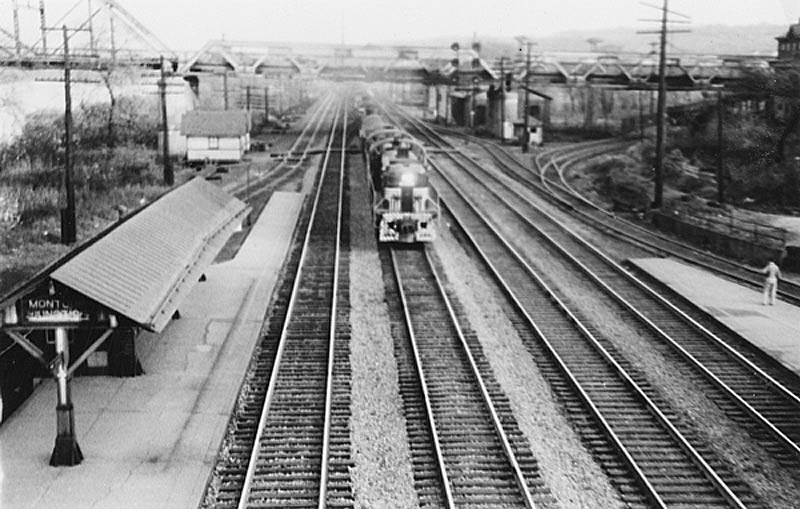 |
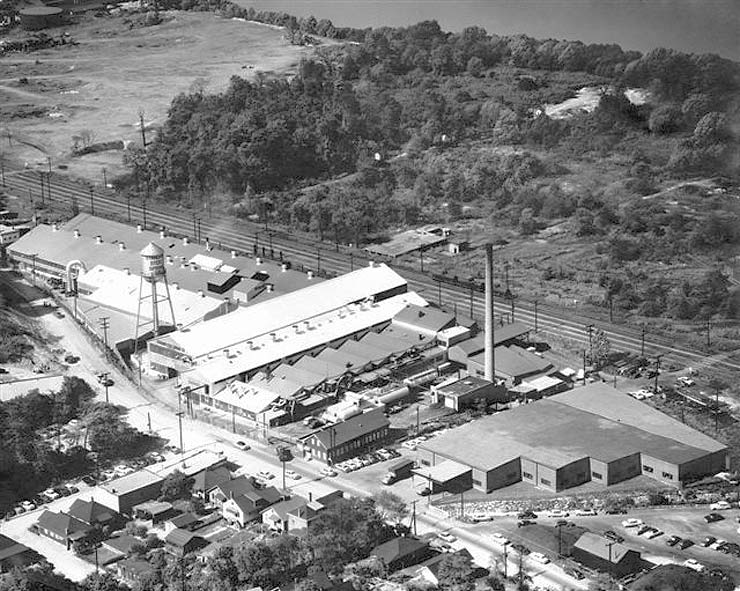 |
This is the West Works of the Standard Steel Spring Corporation, as it appeared in 1950. In l952 it was bought out by Rockwell Steel. A block away, down by the river just off this photo to the upper right, was the East Works. The West Works made heavy duty springs for General Motors trucks and cars. The East Works made "rails" (the girders) for General Motors truck and car chasses (the body frames). From 1948 through '57, these two plants combined employed 8,000 men working three shifts round the clock seven days a week all year. They produced ALL the springs and frames for ALL General Motors vehicles. Every morning for 10 years an entire train of springs and frames was loaded for shipment to GM factories in Michigan. |
| Work in our 11 mills paid well but was demanding. There was heavy machinery, flames at unimaginable temperatures, continuous loud noise, dust, constant movement of cranes, chains and men, light so intense that to more than glance at it would damage the eyes, and molds or liquids in them hot enough to cripple a careless worker. Many fathers later in life would suffer from emphysema, hearing problems, or poor night vision due to their careers in these mills. So many of our fathers said the same thing that it became a cliche in Coraopolis : "I worked in the mills so my children could go to college and never have to." Wherever we went in town, at any time of day or night, in the background would be the clanging, banging and grinding sounds. Any time we mentioned it, our mothers or grandmothers would admonish us, "Learn to appreciate it. That's the sound of money." | 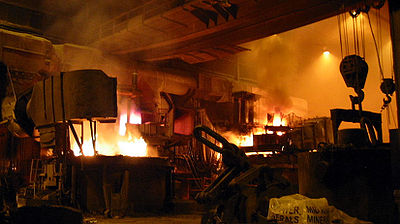 |
Photographs, questions or comments should be directed to Cory at Coraopolis60@aol.com. |
| Then there was the Oho River. Tugboats were continually pushing barges, usually full of coal or steel, up or down the river. Here at right is a tug passing under the Sewickley Bridge in June 1959. Tug horns added to the sounds of mills and railroads. They were impressive to see, but those of us swimming in the river had to be careful of the strong undertow tugs created, and canoeists and johnboaters had to be careful of the waves set up by the tug wakes. The barges and tugs were made at the Dravo facility, and some of our fathers worked there. Other fathers worked on the tugs, and would be gone for a week or two at a time, sleeping and eating on board as they pushed coal or steel down to Cincinnati, St. Louis, Memphis, New Orleans and sometimes even up to Minneapolis. | 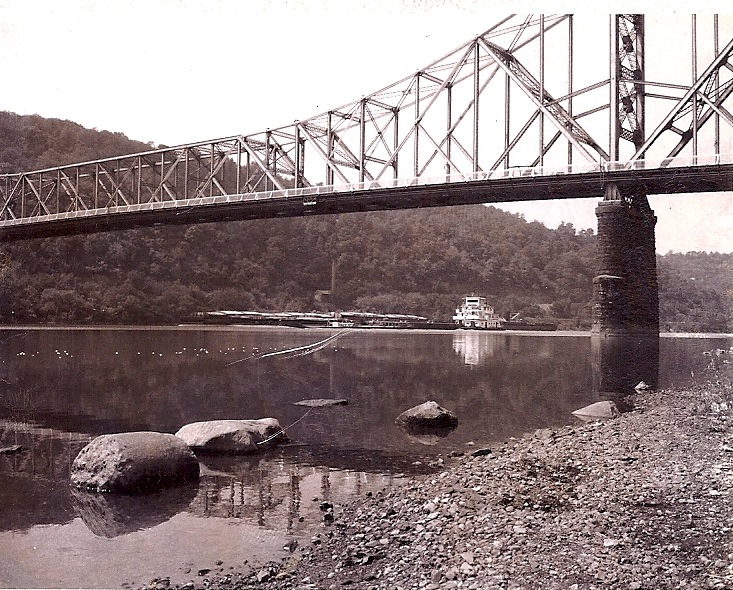 |
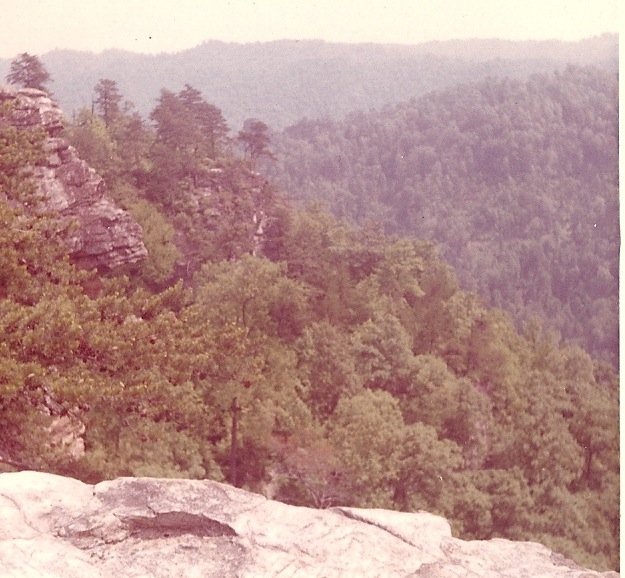 |
At left is Wildcat Rock, the highest point within the city limits. As kids most of us hiked up to this rock formation at least once, often taking a lunch. Some of us also explored the larger caves that went back into the cliffs underneath it. We were careful to avoid the smaller ones, in which several wildcats had their lairs. A few of us visited the place often, climbing around on the cliffs and camping out in the woods below. When we were in junior high, the big story was the discovery of a skeleton far back in one of the caves. It was eventually determined to be a Native American several hundred years old, but from then on the place was thought to be haunted and fewer kids went there. The Girl Scout Lodge was just around the cliffline from Wildcat Rock. The view at left looks out over what we called McAbe's Hollow, but today is called Omlor's Woods. A large pond called Hidden Lake was about a mile up the hollow. This was a pretty large expanse of woods, but an even larger one, Thorn Run Hollow, opened up above the center of town behind Southern, Summit, St. Clair and Woodlawn Avenues. Kids could hike out the creek all the way to what is now Montour Country Club in central Moon Township. Most of the boys in our class and some of the girls spent time in these woods, either through Boy Scouts or Girl Scouts or Church Groups, on weekend hikes or picnics with their families or playing with friends. They camped out or built lean tos or tree houses. Girls loved to come out to these woods in Spring and pick bouquets of wildflowers. Boys would find specimens for science fair projects, extra credit assignments or temporary pets. Except for bear and elk, every Pennsylvania animal lived here. |
We grew up in a town bounded by the river on one side and forested hills on the other. The photo at right is taken from the top row of the football stadium, looking down across town on a Summer evening. The river and woods had an effect even on kids who never explored them, because they defined the town. Unlike most places, Coraopolis did not flow into the next community. The river and various woods clearly separated us. No one knew exactly where McKees Rocks and Stowe Township began and ended, or where Pittsburgh, Bellevue, Avalon, Emsworth and Ben Avon began and ended, or where Sewickley, Leetsdale and Ambridge began and ended. But we knew exactly where the boundaries of Coraopolis were. It gave us an identity, set us apart. More than kids elsewhere, we lived in our own little world. The heavy tree cover helped soften the harsh industrial atmosphere. Trees soaked up thousands of tons of pollution and recycled it into fresh air. They also blocked our view so we were not always looking at the factories. We thought neighboring towns, like Ambridge, Aliquippa and McKees Rocks, looked stark and barren. They envied our trees and teased us about looking like an inhabited forest. |
 |
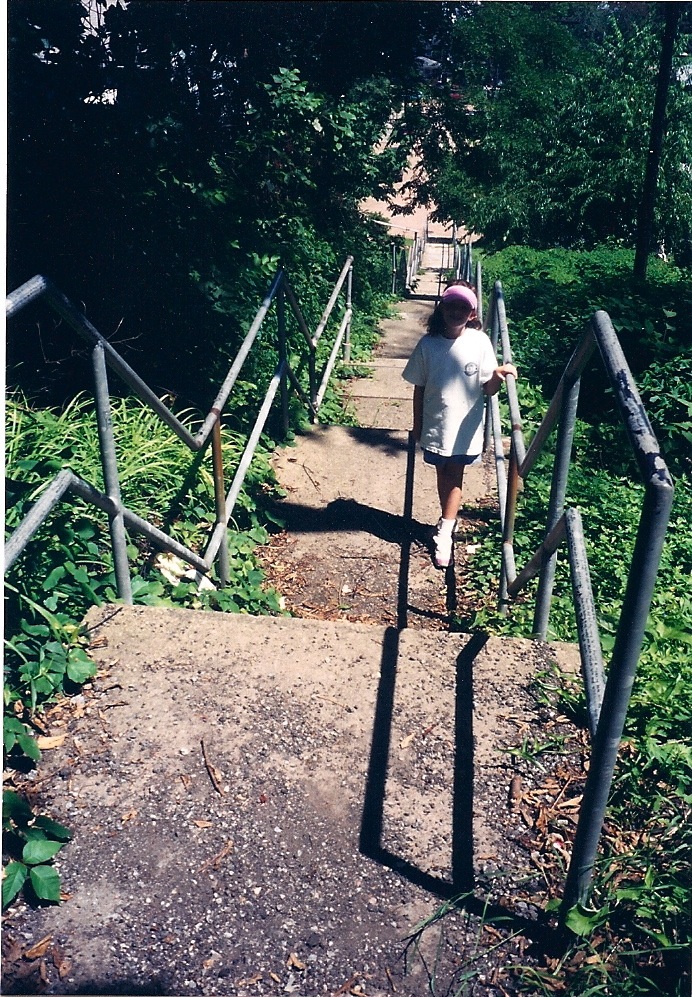 |
The hills and creeks also formed our geography within the town. We had Montour Hill, the Lincoln School Neighborhood, Below The Tracks, the West End, the long center of town and Neely Heights. Shown here at left are The Cinder Steps, which connected Montour Hill and the Lincoln School Neighborhood. We used to play football, basketball and baseball by neighborhood. Montour Hill would play the Lincoln School Bunch, The Heights would play the kids from Below The Tracks, or one of our teams would venture West and play the Thorn Hollow Bunch. No adults organized this informal league. We just practiced and played in driveways, backyards, vacant lots or the middle of the street. Today, most kids play their sports in organized leagues. We picked up sides from whoever was available and went at it. When we were seniors all of our opponents talked about how well our teams played together. No wonder. We'd been playing together for 10 years. And we weren't hiking or biking all the way across town for a 30 or 60 minute game. Once we got there, we'd play all day. TV? Video games? No Way. The sprawling terrain of Coraopolis just made life interesting. Kids from "down in town" would walk or bike a mile or more to visit friends up on the hills and enjoy the woods or larger backyards. Kids from the hills would visit friends near the business district when they wanted to go to a movie or the YMCA, play or watch a Little League baseball game at Ewing Field, fish or canoe on the river, or stop by Isaly's for a milkshake. By the time we were in fifth grade, most of us were walking and biking all over town and out into Moon Township, Neville Island, Robinson and Crescent Townships. Today, parents rarely let their kids roam that far from home. We'd walk 45 minutes to a Saturday afternoon double feature movie. |
 |
What kid doesn't love a fire truck? Coraopolis had a beautiful fleet of fire trucks. We got to see them five times a year, in the Memorial Day, Fourth of July, YMCA Fair, Halloween and Christmas Parades. Every September for the March of Dimes fundraising drives, Boy Scouts got to ride on them all over town as they canvassed door to door for donations. One of our favorite grade school events would always be the visit of a fire truck. Classes would get to come out and climb all over the truck and learn about its features. | 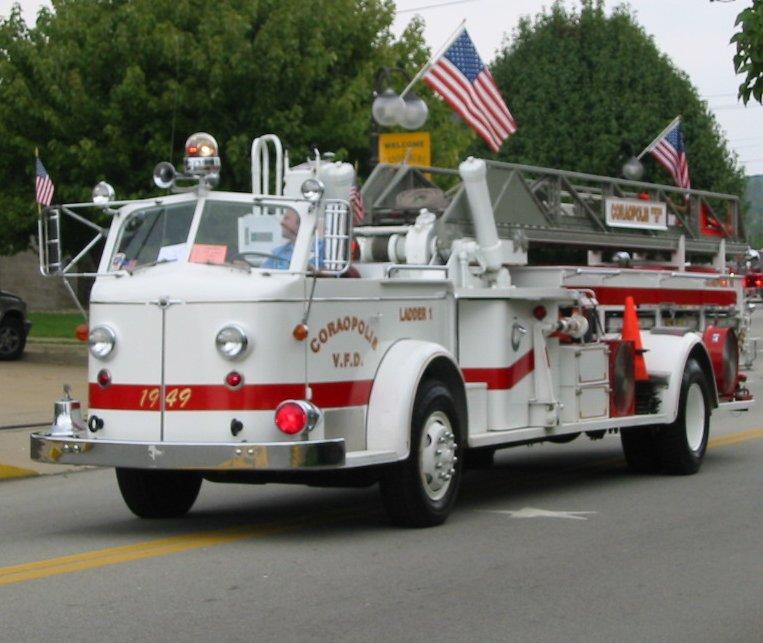 |
| The Borough Building was the center of government. Our parents came here to pay bills and take care of business, but as kids we had business here, too. Before the new facility opened, the Coraopolis Public Library was in the rear of this building. Upstairs, we came here to get our yearly bike licenses. In grade school, many boys were Patrol Boys, and their official training and occasional townwide assemblies were held here. The police held an annual Christmas Party here for Patrol Boys which was one of the year's most anticipated events. As we got old enough to drive, parking or speeding tickets were paid here. And for those unfortunate enough to get in trouble with the police, this was where their parents had to bail them out and pick them up. During parades, the judges reviewing stand was set up on the steps of this building. The annual Halloween Parade was such a big event even many parents worked for months preparing for the costume competition, and the judging was done as the parade came past these steps. Some of us in Lillian Griffith's classes came here to watch Town Council meetings. The Coraopolis Police held a Bike Rodeo here every year, with obstacle courses and other tests of bicycling skill. Many of us in grade school and junior high won trophies at the rodeos. Finally, this was where the much hated Curfew was located. From the roof, it blared forth at 10 pm every night. As kids, we were supposed to be off the streets after it went off. Police, usually "Whitey," would drive around looking for kids out "after curfew." |  |
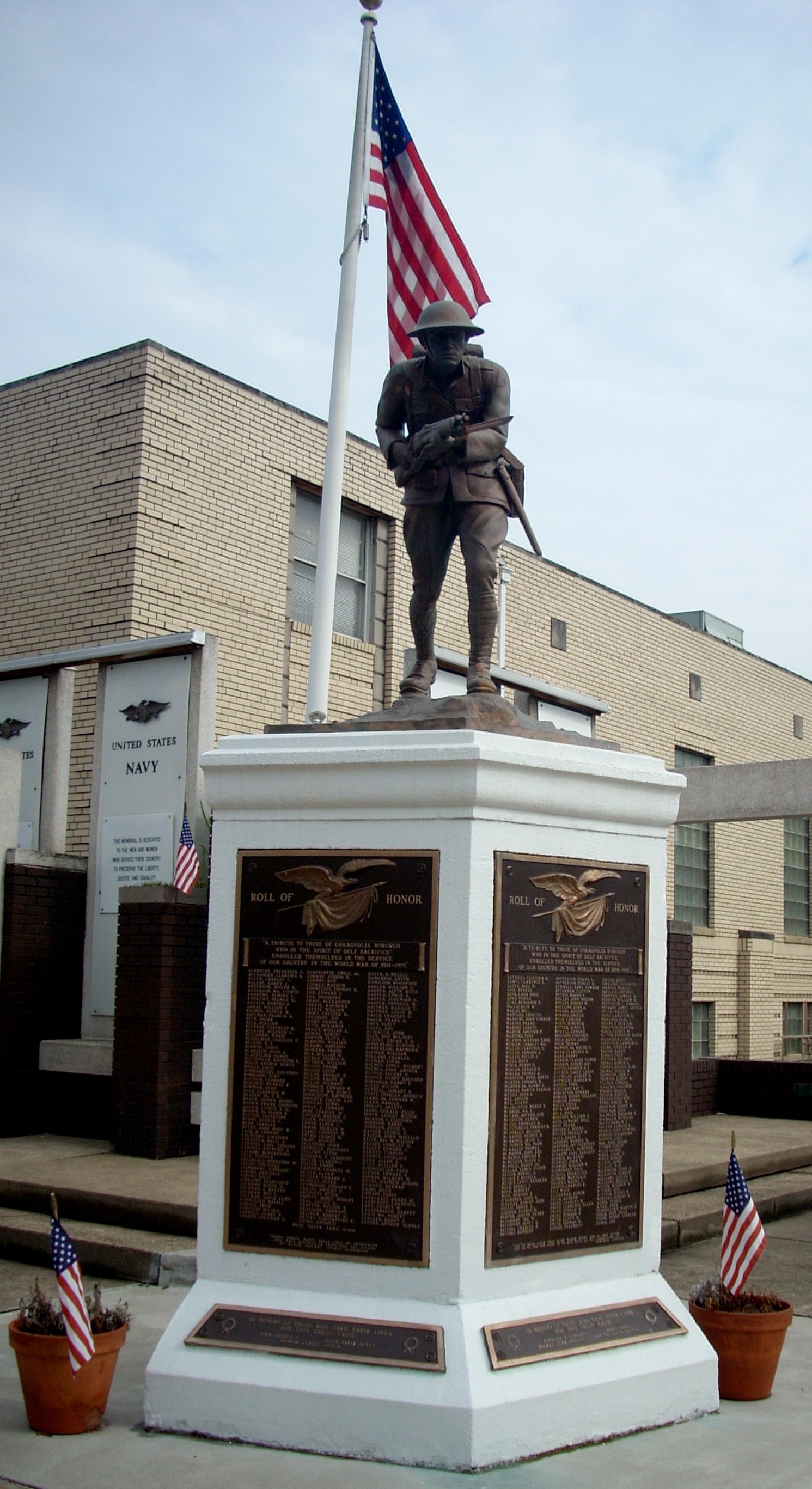 |
This famous "Doughboy" Statue that we gathered around before and after school every day no longer stands in front of the high school. When the school was converted to apartments, the statue was moved to a spot on Fifth Avenue in front of the Veterans of Foreign Wars Building. The statue, a pressed copper likeness of a World War I soldier, has plates with the names of all Coraopolitans who died in the military in World Wars I and II. Once a year, the week before Memorial Day Weekend, its brass plates are polished and the stone pedestal thoroughly cleaned. Every couple of weeks the flower pots at its base are repotted with fresh flowers. Its present position is more dignified and beautiful than its stand in front of the high school steps, but it is no longer part of the daily lives of high school students. Cheerleaders and pep club members sold football game ribbons around this statue, many dates were arranged around it, and students would routinely tell someone they would meet after school or during lunch "at the statue." The Doughboy is actually one copy of a statue by E.M. Vaquesney. It was mass produced in the 1920s to honor World War I (1914-1918) veterans, and distributed to any town raising the price. The Coraopolis VFW raised $3500, $1000 for the statue and $2500 for the base and the copper plates. Originally, 300 were produced. The Smithsonian Institute currently lists 134 remaining. They were originally installed in cemeteries, parks, town squares, and in front of high schools and city halls. Over the years, tornadoes, hurricanes, floods, vehicles smashing into them, trees falling, and other accidents have destroyed 166. There were three variations on the Coraopolis version. One is a U.S. Navy version, one an infantryman waving his hand overhead, and the other a World War II version. There are not as many copies of those still existent. . |
| The "new" Coraopolis Public Library opened in 1955 as a state of the art small town facility. Since 1937 it had been housed in the basement of the Borough Building. Few knew behind the scenes Assistant Superintendant For Elementary Education Dr. Harry Houtz played a critical role in getting the new library built and planning its contents and programs. He worked with Mrs. Tussey in selecting books to keep a majority of kids grades 1-8 reading. He persuaded local mills and banks to increase their donations. The reading program he was administering in the three grade schools depended on students continually reading, and a library was central to that task. Many of us would stop at the library on the way home from school. During Summers we made weekly visits to pick up another two or three books. We belonged to reading clubs which held weekly book discussions. Many of us came here to study in the evenings if we had several brothers and sisters making home too noisy. School committees met here to work on projects. |  |
 |
Helen Tussey ruled over the public library like a proud Mother Hen as we grew up, helping with book selection, enforcing quiet and scheduling events. She was the symbol of the library to most Coraopolis residents. Through the miracle of Interlibrary Loan, if a book existed anywhere, Mrs. Tussey could get it for us within about a week, so when working on school research papers or pursuing our own projects, the Coraopolis Library was our gateway to the whole world of information. Mrs. Tussey was named Outstanding Public Librarian Of The Year three times, and the Coraopolis Library was named Small Library Of The Year twice by the Pennsylvania Library Association. The Coraopolis Public Library still exists in the same building as we approach our 50th Reunion. It is stocked with computers and music and is as busy today with adults and students as it ever was. It is still a good small town library but is in need of an expansion, probably using the acre of land between it and Ridge Avenue. However, there is no Dr. Harry Houtz to spearhead a funding drive. |
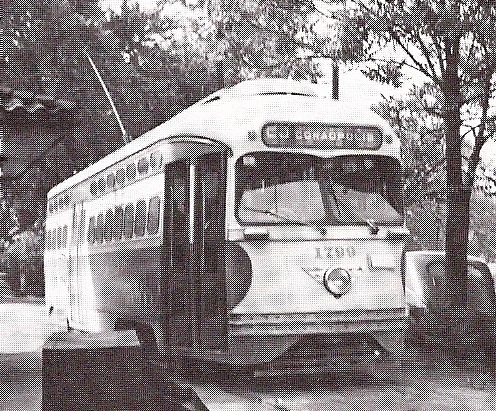 |
Very few of our families had two cars. When our fathers were at work and our mothers took us with them on trips to Sewickley or into Pittsburgh, we used mass transit. When we were in elementary school, we rode the streetcars (left), with tracks sunk in the streets and poles drawing electricity from overhead lines. As we entered junior high, they were replaced by Shafer Buses, which also carried our football and basketball teams to away games and students on one day field trips. The Shafer bus garage was in the western end of town on Fourth Avenue. |  |
 |
The Coraopolis Theatre was a major location in our lives. We might have caught a few movies in Pittsburgh, at Sewickley or even the Airport. But we saw most of our movies right here on Fifth Avenue, across from the Borough Building, next to Evanko's. When we were in high school science fiction and westerns were the big genres. We saw Shane, Big Country, High Noon and Bad Day At Black Rock here. We also saw War Of The Worlds, Invaders From Mars, Them, The Beast From The Black Lagoon and Twenty Thousand Leagues Beneath The Sea. Our favorite format was the Saturday Matinee. We got to see two feature movies, a cartoon, the Saturday Serial and previews for 25 cents when we were in grade school and junior high and 75 cents in high school. Saturday Serials would be 15 minute chapters in a year long adventure. During our junior high years the Saturday Serials featured Batman, Superman and The Green Hornet, one year each. Other top hits we saw here were Picnic, Stalag 17 and From Here to Eternity. The theatre had an alley entrance which kids learned at an early age to sneak in. There were two aisles. The middle section was commonly used. The back several rows of the side sections were understood to be reserved for couples who could snuggle in semiprivate. |
The scene at right is from War of the Worlds. Two weeks before a new movie came to town, the theatre would place 4 x 2 cardboard posters in all the store windows. Several of us would go around after the movie left and collect these posters. Most of our mothers threw them out after we went away to college or got married, but today such a collection would be worth a hundred thousand dollars. The Coraopolis Theatre, along with the YMCA and Dravo Pool, made a tremendous contribution to our social lives. In the years from about 5th grade to 11th grade, when we could not yet drive, if we had lived elsewhere we might have been stranded. But living in Coraopolis meant we could walk to meet friends and go to a movie, dance or swim. Later, it meant real dates were possible (What could be more grownup than going out to dance, see a movie and grab something to eat? By seventh grade we all thought we were pretty cool.) The theatre also was our window into popular culture. When we read movie reviews in the newspapers or magazines, we could actually see those movies. Many kids on our class went to a movie once a week the whole time we were growing up. That was a lot of movies on a babysitting, paper route or lawnmowing budget. |
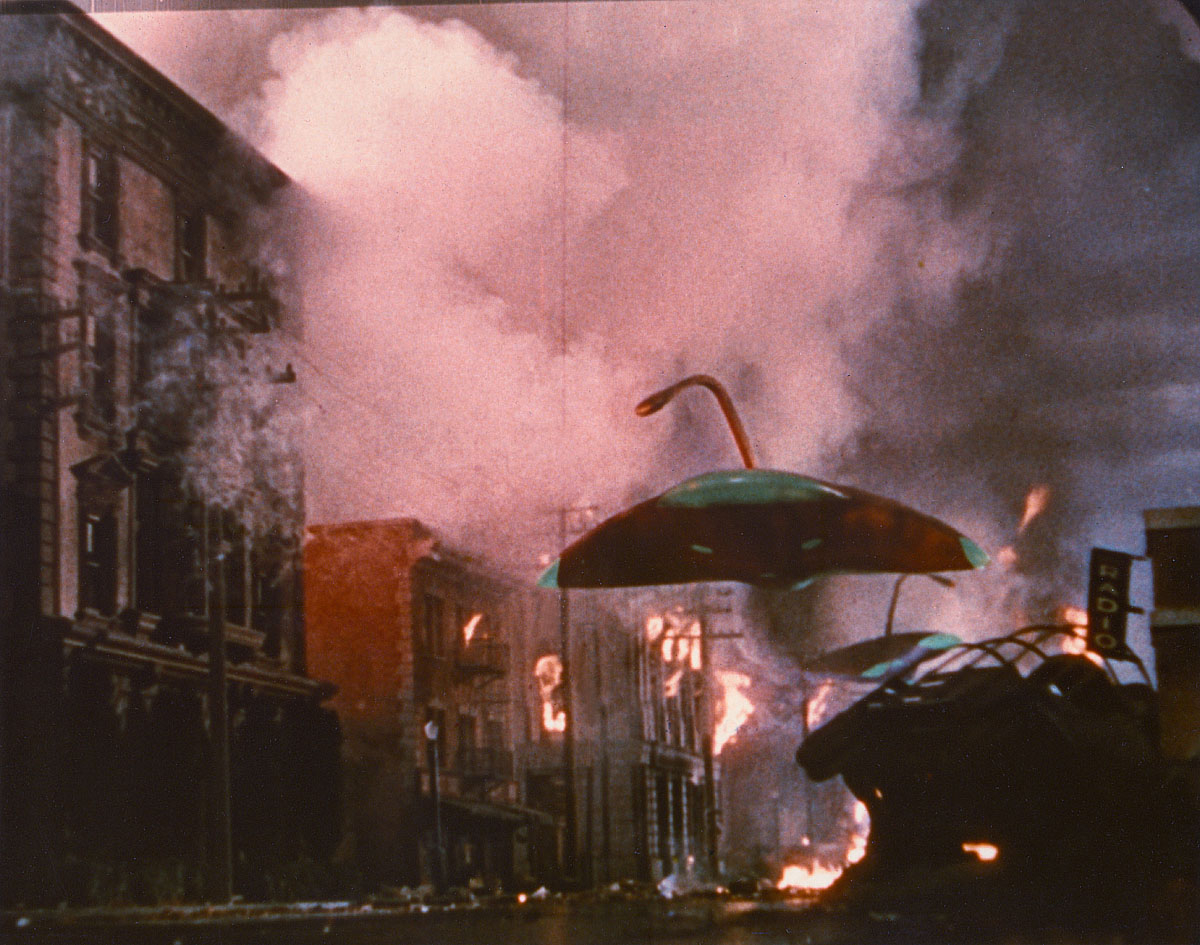 |
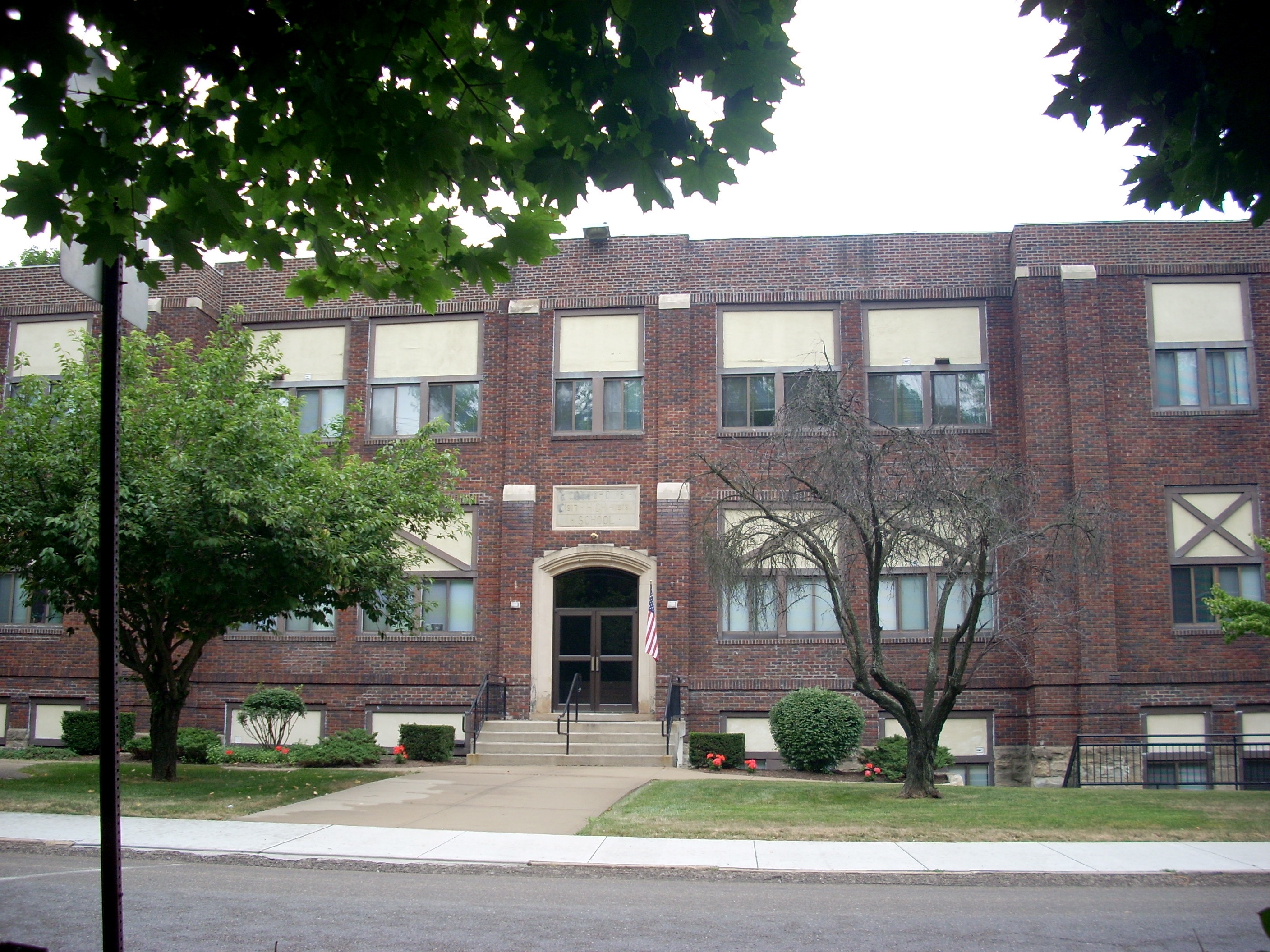 |
So what have they done with our old high school building 50 years after we left it? It's now an apartment complex. In 1970 they said it was structurally unsound so could not possibly be renovated for continued use as a school. But it's sound enough for people to live in. Some will tell you the architect did a great job and it's beautiful. Don't believe them. That's all hype. It was a butcher job. There are only four hints that suggest it was ever a school. The most spectacular is the old skylight (below left). You will recall it was in the center of the ceiling over the auditorium seats. They've cut a large hole in the auditorium floor to create an atrium extending from the ceiling down to the bleachers over the old gym. Center below is one of the staircases. Notice they've kept the same doors, bannisters and walnut trim on the ballistrades. Carpeting now covers our old concrete steps. Below right looks out the front door. You will remember there were trophy cases lining these two walls. In their place are now two rows of the old auditorium seats, well polished and restored. Those are our original doors. They were removed, restored and remounted. New glass was installed in 1970 but those are the original oak frames. In the photo at left the windows have been halved, but that is the original plate over the door. Where our gym was is now a corporate office complex. |
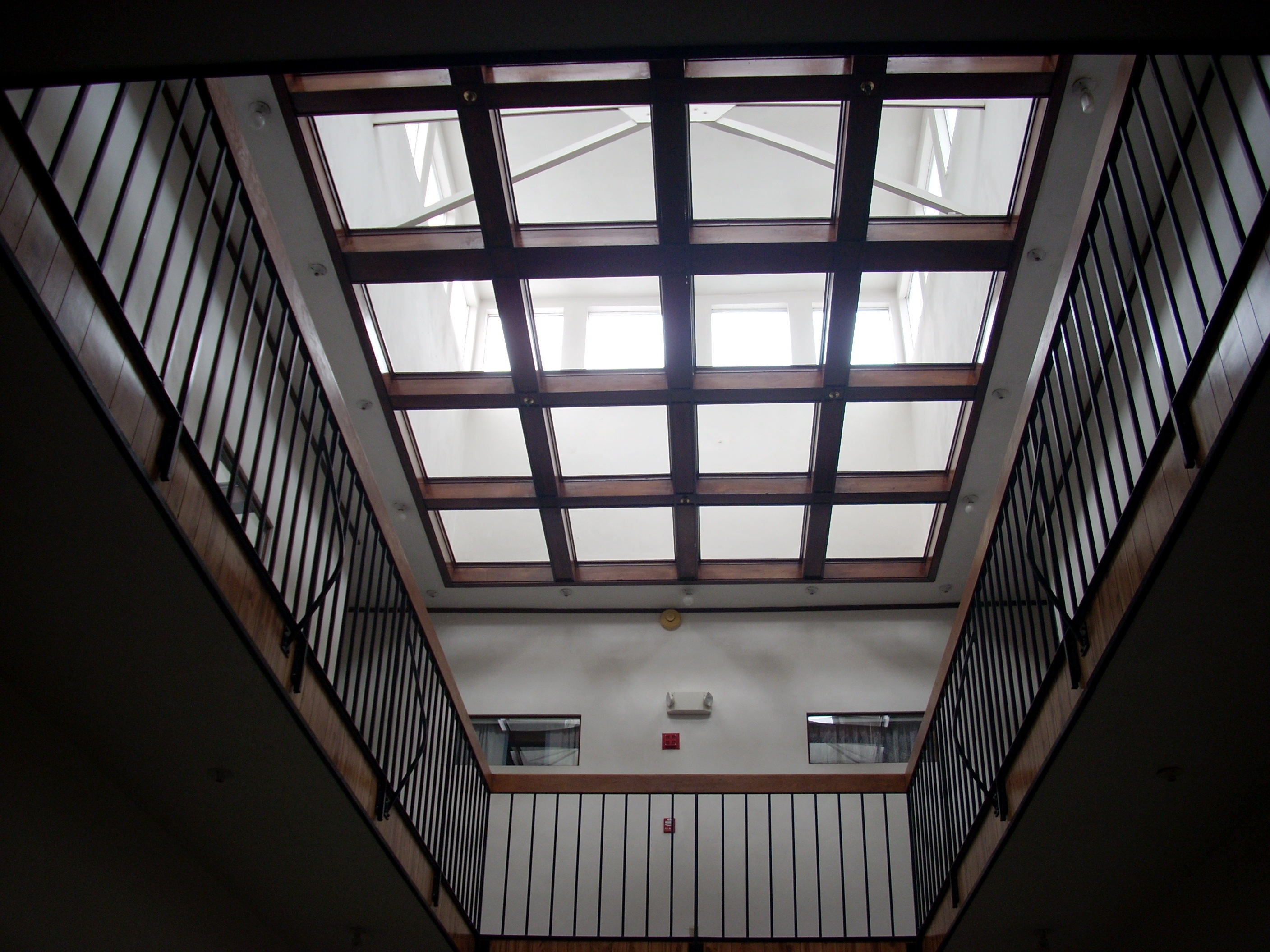 |
 |
 |
| Every Thursday night the Pittsburgh Racing Association held stock car races at Heidelberg. Saturday nights Super Modifieds and Indianapolis cars raced at Clinton. Sundays The Greater Pittsburgh Dragway operated. Coraopolis drivers and mechanics were active at all those tracks. The two best were Russell Musta and Dick Linder. We loved to hang around their garages while they were working on their cars, absorbing racing lore and learning about engines and transmissions. As we grew up, Musta and Linder kept moving up in the profession. Our senior year, Dick qualified for Indianapolis. We made plans to go to Pittsburgh and watch the simulcast at the Nixon Theatre, since it wasn't televised. Linder had one last qualifying race at Langhorne Speedway in Eastern Pennsylvania, which would determine his position in the Indy Time Trials. We were watching the tv news Saturday night to see how he finished. Instead, we learned there had been a terrible five car crash and he had been killed. He would have been the only Coraopolis resident to ever race at Indianapolis. There still has not been one. |  |
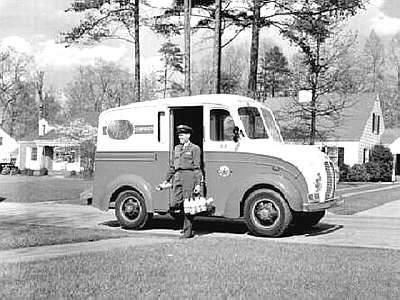 |
Those of us who lived up on the hills had our milk, bread and eggs delivered by truck. The milk and bread trucks would deliver three days a week, and the egg man came once a week. Our milk came from Otto Dairy in glass bottles. Families who subscribed to this service received a special box to sit on their porch. They would place their empties in the box and the milkman would replace them with fresh bottles. The box protected bottles from hot sun, extreme cold and wind. Our mothers would place specific orders for white, chocolate, buttermilk, or other kinds of milk. As kids we loved the milk trucks because they were so short and stubby looking. Occasionally, when they passed us walking up the hill in heavy rain or bitter cold, the driver would stop and give us a ride. This was a big thrill when we were little kids. Our bread came from Duquesne Bakery. Our mothers would place specific orders for white, raisen, whole wheat, Mancini's, Pumpernickle, Garlic or other kinds of bread. Larger families received larger orders and delivery three times a week. Small families might only receive delivery once or twice a week. Chuck Hasper, the egg man, could bring several different kinds of eggs. Most of our mothers only ordered the regular sized white chickens' eggs, but occasionally we'd talk them into ordering some of the other kinds just so we could see and taste them. |
| Being a blue collar town, we were not into fancy hair emporiums. When Cory men, from about age four, needed a haircut, which was every few weeks, they went to barbershops. Every part of town had its own, plus Schaugnessey's, across from the theatre next to the Borough Building. These shops reeked of Testosterone. The conversations focused on sports, cars, hunting and fishing. Stacks of Look, Life, Sports Illustrated, Saturday Evening Post, Popular Mechanics, Hot Rod, Street Rod, Car Craft and Esquire were placed for use while you waited your turn. The odor of Vitalis Hair Lotion was ever present. Businessmen and professionals came in as often as daily for shaves and trims. It was not until the 1960s that the unkempt look would arise. In our 1950s, hair was neatly maintained, whether crewcut, ducktail or pompadour. These barber shops were male social centers, where men of all income levels discussed sports, politics and economics. | 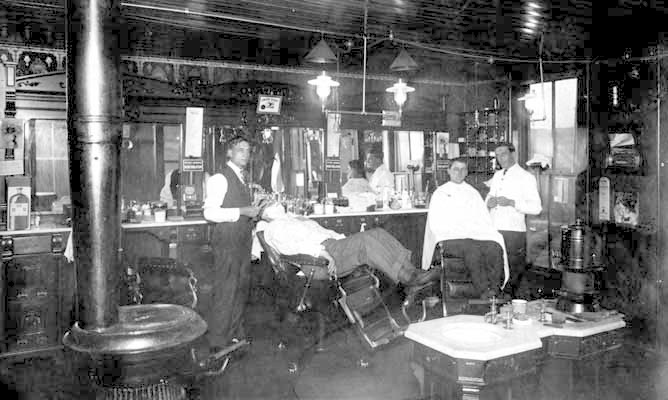 |
| Please email your photographs to Cory at Coraopolis60@aol.com. We especially need photos of the Friday Night Club; high school baseball; various scenes at the YMCA such as pool, pingpong, swimming, weight lifting and the gym; junior high football or basketball; classroom scenes in elementary or junior high; various students' cars; school holiday decorations such as Christmas trees; students in their homes with their Christmas trees or model train layouts; and field trips. We need photos with recognizable faces. Do not send original photos by mail; they are too valuable and it is too risky. |